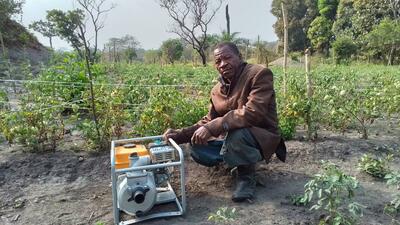Creating clarity out of complexity: Defining obstacles to trade
Multilateral, regional and bilateral trade negotiations, as well as non-reciprocal concessions, have led to a remarkable reduction in global tariff protection. With favourable market access conditions, international trade has soared to previously unseen levels, raising overall welfare and standards of living. However, trade barriers related to non-tariff measures (NTMs) may undermine the impact of falling tariffs. Although the sound use of NTMs to ensure consumer health, environmental protection or national security is legitimate, evidence suggests countries are also resorting to NTMs as alternative mechanisms to protect domestic industries.
Being 'defined by what they are not', a phrase coined by Alan Deardorff and Robert Stern of the University of Michigan in a 1998 publication entitled Measurement of non-tariff barriers, NTMs comprise a myriad of policies other than tariff duties. They are complex legal texts specific to a product and applying country and they are thus more difficult to quantify or compare than tariffs. Conceptually, the term NTM is neutral and does not necessarily imply a trade barrier, while the term non-tariff barrier (NTB) implies a negative impact on trade. As such, NTBs are a subset of NTMs with a protectionist or discriminatory intent.
NTMs particularly concern exporters and importers in developing and least developed countries (LDCs) that struggle with complex requirements. Firms in these countries often have inadequate domestic trade-related infrastructure and face administrative obstacles. Therefore, NTMs that would not normally be considered as very restrictive can represent major burdens in LDCs. In addition, the lack of export support services and insufficient access to information on NTMs put pressure on the international competitiveness of firms. Hence, both NTMs applied by partner countries and domestic burdens have an impact on market access and keep firms from seizing the opportunities created by globalization.
ITC was one of eight organizations - along with the United Nations Food and Agriculture Organization, International Monetary Fund, Organisation for Economic Co-operation and Development, United Nations Conference on Trade and Development (UNCTAD), United Nations Industrial Development Organization, the World Bank and World Trade Organization - that finalized a new international taxonomy of NTMs in November 2009. This classification covers the diversity of NTMs and is used to collect, classify, analyse and disseminate information on NTMs received from official government sources and for working with perception-based data.
NTM categories
Within the classification there are two broad categories of NTMs: technical measures and non-technical measures. Technical measures include product-specific requirements such as tolerance limits of certain substances, labelling standards and transport conditions. They also include sanitary and phytosanitary (SPS) measures, which cover standards and procedures to protect human, animal or plant life or health from risks such as pests, diseases, additives and toxins, and technical barriers to trade (TBTs), which refer to the technical specification of products or production processes as well as related conformity assessment requirements.
Non-technical measures include charges, taxes and other para-tariff measures in addition to ordinary customs duties; quantity control measures such as non-automatic licences or quotas; pre-shipment inspections and formalities such as automatic licences; rules of origin; finance measures such as terms of payment or exchange rate regulations; and price control measures.Beyond NTMs, a richer picture of the problems companies face can be created by examining procedural obstacles, essentially practical challenges directly related to the implementation of NTMs such as a lack of adequate testing facilities to comply with technical measures or excessive documentation in the administration of licences. The trade-related business environment can also be taken into account. It can cause difficulties similar to procedural obstacles, but these problems are unrelated to specific NTMs and could, for example, be delays and costs caused by poor infrastructure or inconsistent behaviour of officials at customs or ports.
Business issues
The diversity of NTMs, NTBs and other obstacles to trade is complicated by how they are applied in different countries and how burdensome they are perceived to be by companies that must comply with them. These issues are exacerbated by national policymakers who often lack a clear picture of what their business sector perceives as predominant obstacles to trade, making it difficult to develop appropriate trade-related policies.
ITC has responded to the needs of business and government to gain a better understanding of NTMs, build capacity to meet NTM requirements, demonstrate compliance at reasonable cost and inform policymakers with a major programme based on large-scale country surveys covering NTMs and other obstacles to trade, and the collection of government regulations on exports and imports. The surveys help countries identify specific non-tariff obstacles to trade that their business sectors face and the extent to which these obstacles burden different sizes and types of businesses. They identify the predominant obstacles at product, sector and partner country level. These obstacles include not only NTMs imposed by partner countries, but also potential bottlenecks in the home country's capabilities and shortfalls in technical facilities needed to meet regulations and demonstrate compliance with NTMs. The collection of official data on NTMs is carried out jointly by ITC, UNCTAD, the World Bank and the African Development Bank. The information collected is being used to populate ITC's new version of Market Access Map, which was released in March 2012.
The three-year ITC programme on NTMs started in March 2010 with funding from the United Kingdom Department for International Development. So far, surveys have been started in 22 countries, but more are planned, with ITC expecting to conclude 30 surveys by the close of 2013 and, as a result, ease the flow of imports and exports for developing countries building business in foreign markets.














